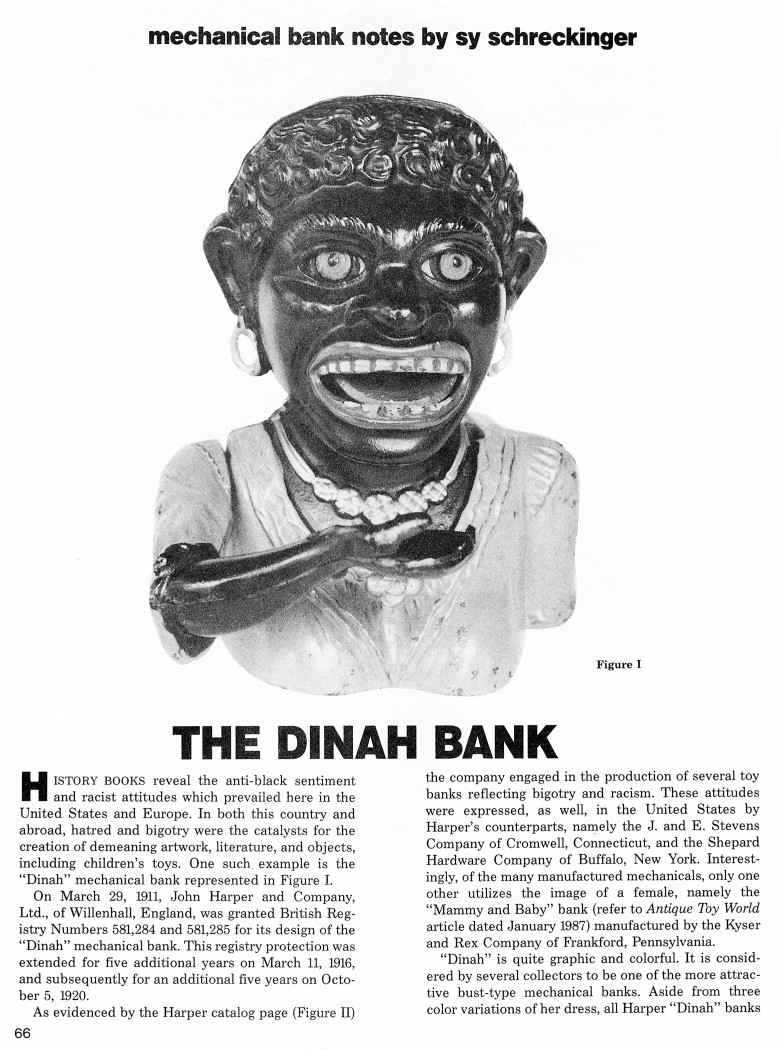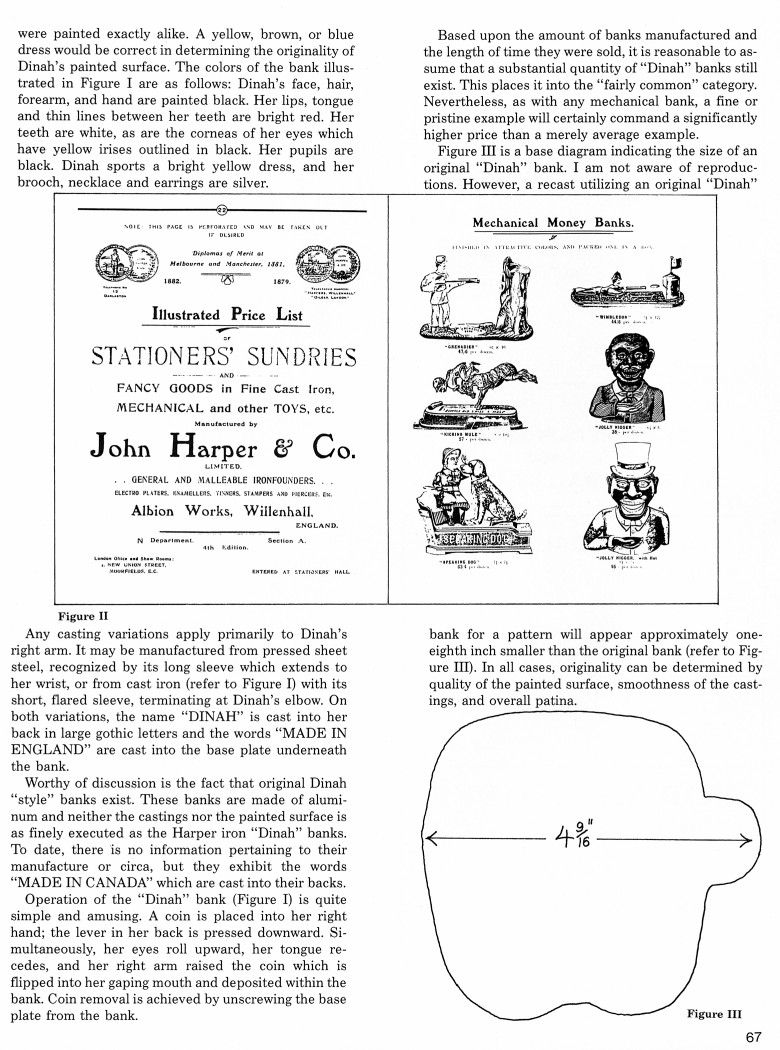|
The Dinah Bank
by Sy Schreckinger – ANTIQUE TOY WORLD Magazine – September,
1991
History books reveal the anti-black sentiment
and racist attitudes which prevailed here in the United States and
Europe. In both this country and abroad, hatred and bigotry were the
catalysts for the creation of demeaning artwork, literature, and objects,
including children's toys. One such example is the "Dinah" mechanical bank
represented in Figure I.
On March 29, 1911, John Harper and Company, Ltd., of Willenhall,
England, was granted British Registry Numbers 581,284 and 581,285 for its
design of the "Dinah" mechanical bank. This registry protection was
extended for five additional years on March 11, 1916, and subsequently for
an additional five years on October 5, 1920.
As evidenced by the Harper catalog page (Figure II) the company
engaged in the production of several toy banks reflecting bigotry and
racism. These attitudes were expressed, as well, in the United States by
Harper's counterparts, namely the J. and E. Stevens Company of Cromwell,
Connecticut, and the Shepard Hardware Company of Buffalo, New York.
Interestingly, of the many manufactured mechanicals, only one other
utilizes the image of a female, namely the "Mammy and Baby" bank (refer to
Antique Toy World article dated
January 1987) manufactured by the Kyser
and Rex Company of Frankford, Pennsylvania.
"Dinah" is quite graphic and colorful. It is considered by several
collectors to be one of the more attractive bust-type mechanical banks.
Aside from three color variations of her dress, all Harper "Dinah" banks
were painted exactly alike. A yellow, brown, or blue dress would be
correct in determining the originality of Dinah's painted surface. The
colors of the bank illustrated in Figure I are as follows: Dinah's face,
hair, forearm, and hand are painted black. Her lips, tongue and thin lines
between her teeth are bright red. Her teeth are white, as are the corneas
of her eyes which have yellow irises outlined in black. Her pupils are
black. Dinah sports a bright yellow dress, and her brooch, necklace and
earrings are silver.
Any casting variations apply primarily to Dinah's right arm. It may
be manufactured from pressed sheet steel, recognized by its long sleeve
which extends to her wrist, or from cast iron (refer to Figure 1) with its
short, flared sleeve, terminating at Dinah's elbow. On both variations,
the name "DINAH" is cast into her back in large gothic letters and the
words "MADE IN ENGLAND" are cast into the base plate underneath the bank.
Worthy of discussion is the fact that original Dinah "style" banks
exist. These banks are made of aluminum and neither the castings nor the
painted surface is as finely executed as the Harper iron "Dinah" banks. To
date, there is no information pertaining to their manufacture or circa,
but they exhibit the words "MADE IN CANADA" which are cast into their
backs.
Operation of the "Dinah" bank (Figure I) is quite simple and amusing.
A coin is placed into her right hand; the lever in her back is pressed
downward. Simultaneously, her eyes roll upward, her tongue recedes, and
her right arm raised the coin which is flipped into her gaping mouth and
deposited within the bank. Coin removal is achieved by unscrewing the base
plate from the bank.
Based upon the amount of banks manufactured and the length of time
they were sold, it is reasonable to assume that a substantial quantity of
"Dinah" banks still exist. This places it into the "fairly common"
category. Nevertheless, as with any mechanical bank, a fine or pristine
example will certainly command a significantly higher price than a merely
average example.
Figure III is a base diagram indicating the size of an original
"Dinah" bank. I am not aware of reproductions. However, a recast
utilizing an original "Dinah" bank for a pattern will appear approximately
one-eighth inch smaller than the original bank (refer to Figure III). In
all cases, originality can be determined by quality of the painted
surface, smoothness of the castings, and overall patina.
|


